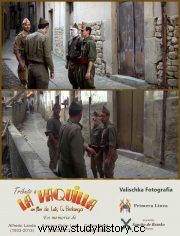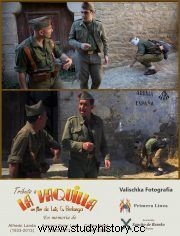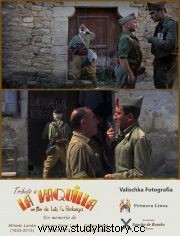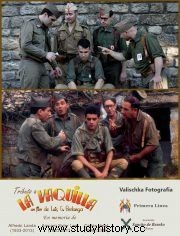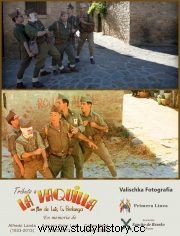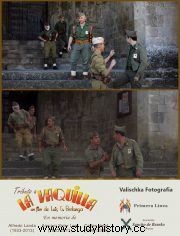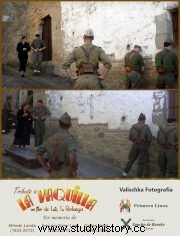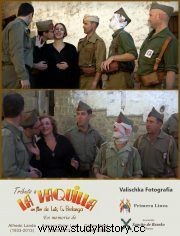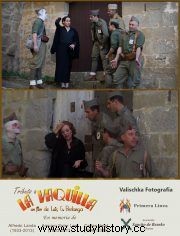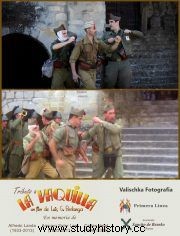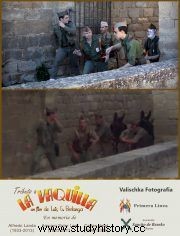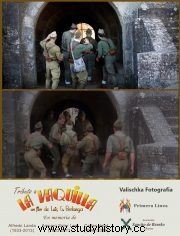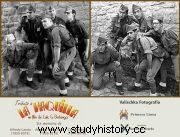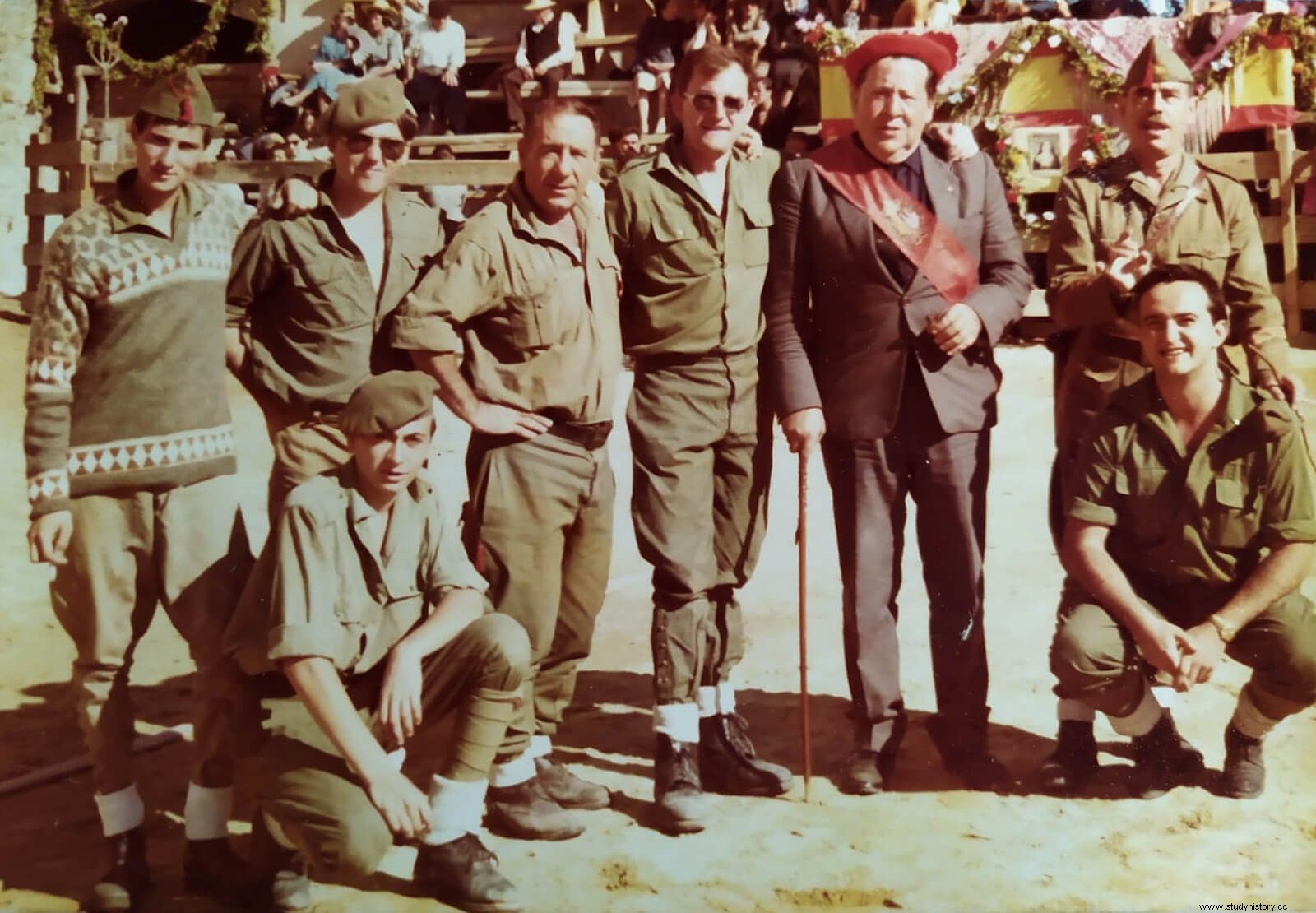
Rejected by censors up to three times (1 ), the filming of La heifer , the work that arose from the pairing of two geniuses such as Luis García Berlanga and Rafael Azcona , was postponed until as late as 1984, and perhaps it was better that way because it is obvious that the film would not have been the same, or even similar. Luis González quotes a phrase from the character played by Alan Alda in Woody Allen's film Crimes and Misdemeanors (Misdemanors, 1989) which, referring to the assassination of Abraham Lincoln, insists that traumatic events cannot be taken as a joke (2), and we already know that with the repressive machinery jokes are fair – and even less so if the War Civil is about–, but Berlanga persevered with the insistence of someone who pursues a dream and the tenacity of those who make a difference, although not a few of his projects remained in the inkwell. For this reason, it was a very dear film for the Valencian director who benefits from seeing the light when democracy has arrived in Spain and the perspective with which the production is approached is totally different, making it easier to make that portrait of a conflict in which one and the other share responsibilities equally until the heifer is killed, which is an allegory of Spain.
A film that, like all human works, is the daughter of its time and cannot escape the political context of the early 1980s, with all its forced balances fruit of the real fear of a new coup d'état that led to repressing the memory of the Civil War at a time when even this concept had not been developed. Nor can we ignore the fact that if this proposal from the cinema in which humor is used for everything, even to talk about a contest whose wounds have not yet closed, may seem candid in the eyes of the 21st century viewer, it was not at all. then, since it was shown as a clearly subversive and destructive resource, as Luis González (3) rightly points out.
For all these reasons, at the Sancho de Beurko Association we were aware of the seductive power of The heifer and we had anxiously awaited the arrival of the centenary of the birth of Luis García Berlanga to bring us closer to Sos del Rey Católico, where the film was shot, to pay our particular tribute using the tools of historical re-enactment, for which we requested the collaboration of the group "Primera Línea" to compose half a dozen characters and explore the possibility of projecting this memory from the town of Zaragoza itself to an audience that loves this film, assuming the challenge of imbuing ourselves with the humor of its characters as the best way to achieve the proposed goals and interacting with the people in those streets loaded with so much significance for all fans.
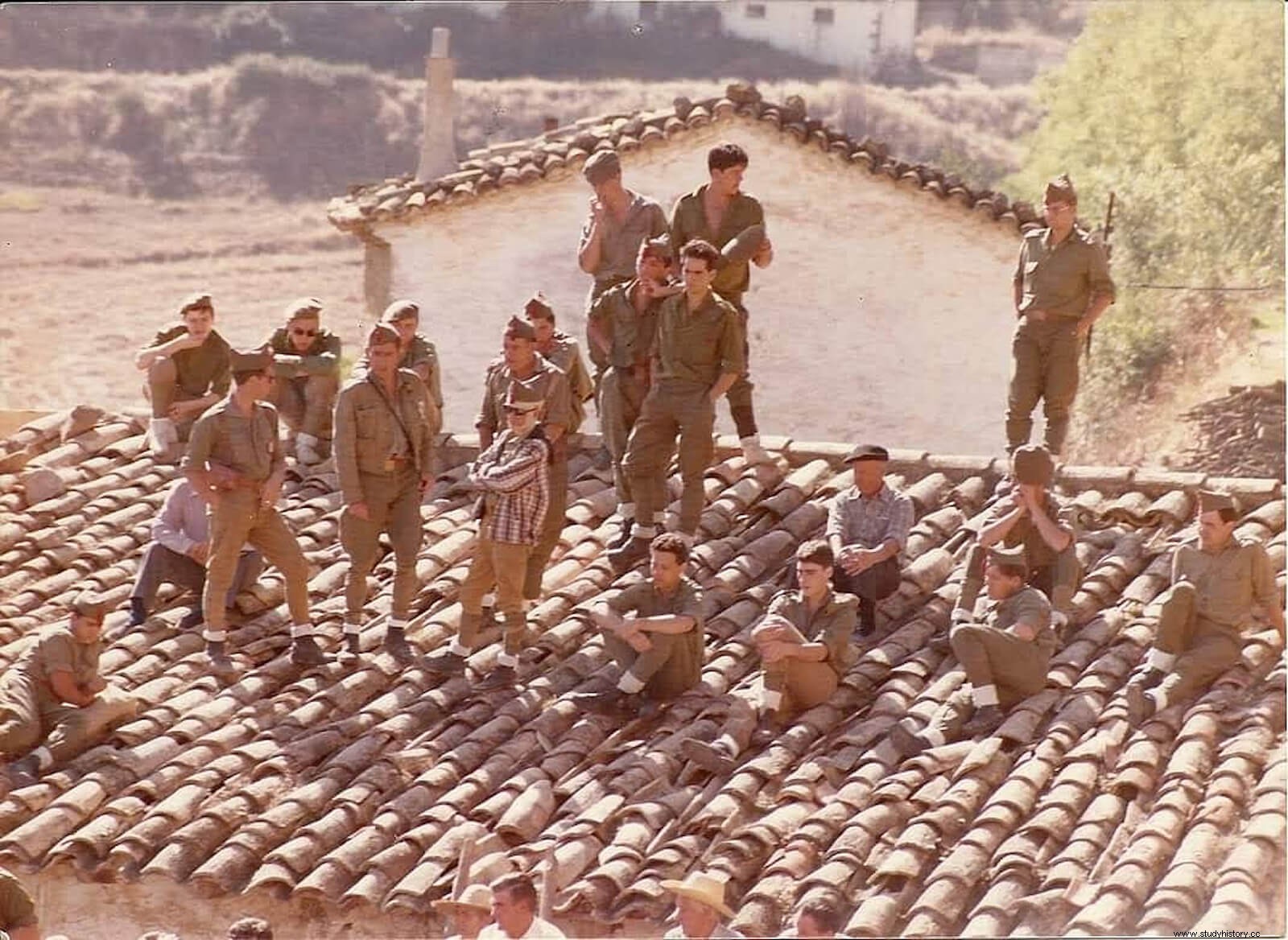
And it is that the shooting lasted about three months “that summer of 84” – paraphrasing the title of the talk given this year during the centenary events by the Aragonese filmmaker Luis Alegre – and involved a good part of the neighbors, who acted as extras. Berlanga himself – who lived there for six months to study the possible scenarios first-hand, as our colleague María Nogueras was recently told during an interview for her doctoral thesis based on ethnography (4) – left a powerful imprint between neighbors , that many photographs were taken with that star-studded acting cast. With a budget of 250 million pesetas, it was for a time the most expensive production in Spanish cinema and premiered in Zaragoza on February 28, 1985. Since then, Sos has always been linked to the film; in 2010 the 25th anniversary was celebrated there with the presence of numerous actors and actresses from La heifer and this year, in which the birth of its director is commemorated, various activities have been carried out during the month of June, including a photocall , talks, a Berlanguian-themed meal, an escape room, a screening of the film and even the brand “Sos de cine” (5) has been created.
Historical recreation and memory of The heifer
Historical re-enactment can enhance tangible heritage (eg, Civil War fortifications) (6) and also intangible heritage, commemorating certain anniversaries that are not covered by the media, favoring the resilience with which our memory is built , as has happened this summer with the 80th Anniversary of the Battle of Karelia, in which more than 70 children from the Spanish war were involved. The intangible heritage, which deals with the traces or vestiges of the past, resides in the identity of the population and we have been able to verify with our recent visit to Sos del Rey Católico, testing the reaction of the people before the re-enactors –in addition to the conversations that we have had with people such as the mayor María José Navarro Lafita, the president of the Association of Tourist Entrepreneurs Felipe Díaz Cano or the friendly ONCE salesman, Julio Ezquerra Begueria– who have created a kind of fictitious ideology in the town through The heifer , a collective memory that, in a certain sense, has overlapped with that of the Civil War itself – let us not forget, it was traumatic for most of the people who lived through it, on one side or another – to the point that the people, as Nogueras tells us, "identifies this film as theirs and the testimonies collected are always positive, since we must not forget that at the beginning of the 80s the war was quite taboo and could have altered behavior in the form of rejection of the local population, but it was not like that”, which constitutes, in our view, the true differential fact of this beautiful town in Zaragoza, which has been associated with cinema ever since. In addition, the memory of the filming, in which the entire town took part –also including people from the rest of the Cinco Villas region–, is very positive and does not provoke social or political controversies, as happens on so many occasions when speaking memory (7).
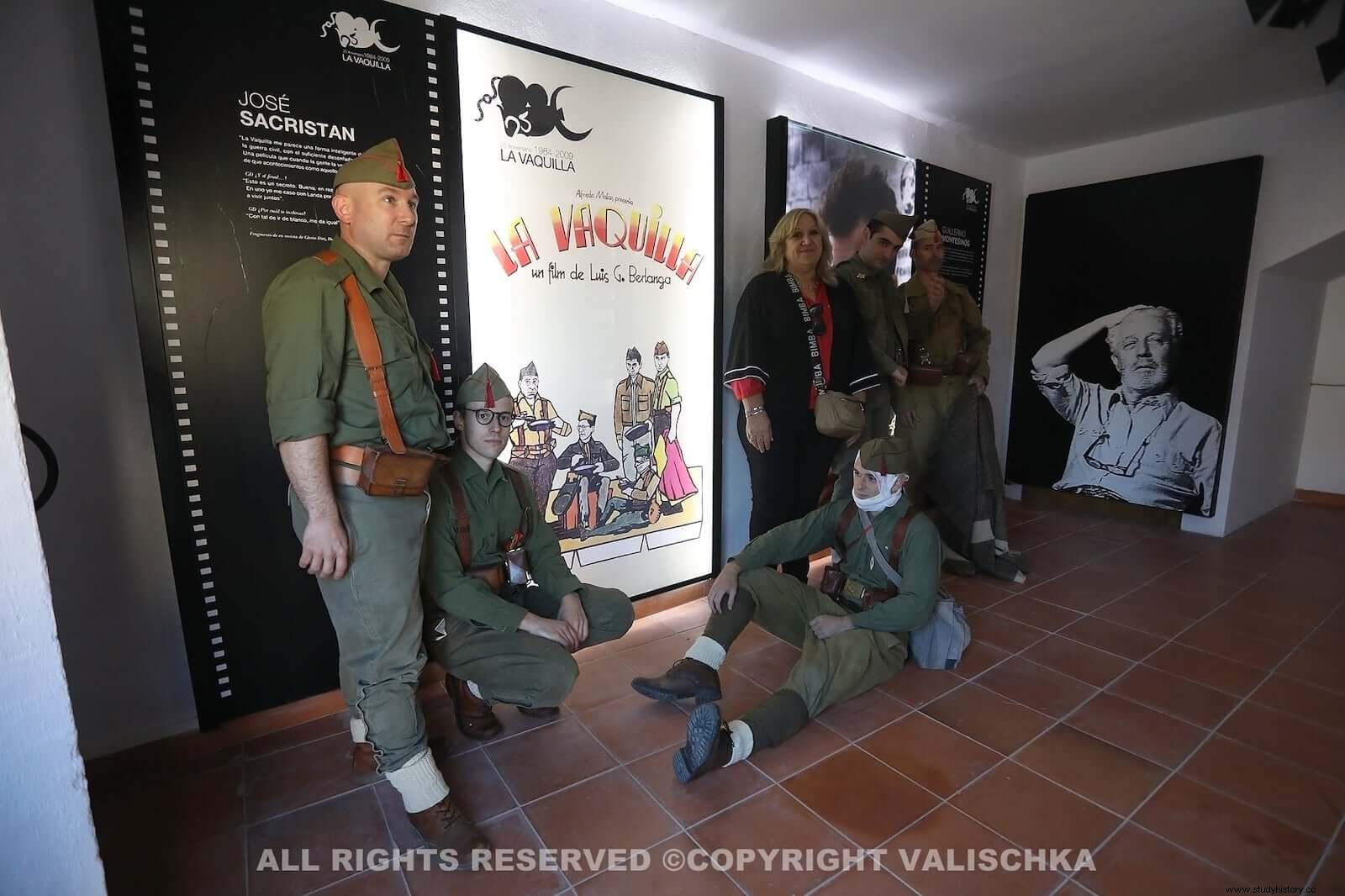
That twist the loop of making a recreation of something which was already a fiction (we are talking about a film, which never had historicist pretensions, although it presents a well-cared set design and setting and has matured into a classic) appears to us as a kind of sublimation of the legacy of the Valencian director, for whom the cinema was a “fleeting art [that] gives eternity to the ephemeral”, although it starts from the thoughtless, from the irrational, like a dream that came to him in fits and starts (8) with no more methodology than the creativity of an artist who laughed at everything and everyone, portraying some characters who would be brought to life by Rafael Azcona's script, who also did the same when it came to laughing, as Pablo Daniel Sansalone (9) said. It is as if our proposal were another absurdity of that portrait that Berlanga makes of the Spanish society of his time , as absurd and contradictory as you like, in which the historical recreation can fit perfectly, favoring, from the visual, that resilience we are talking about, which is none other than the permanence of a memory of a fictional event that they have already 36/37 years have passed (the film) and that projects us to a memory of a real and absolutely traumatic event for the collective identity of a people and of which 85 years have passed (the Civil War).
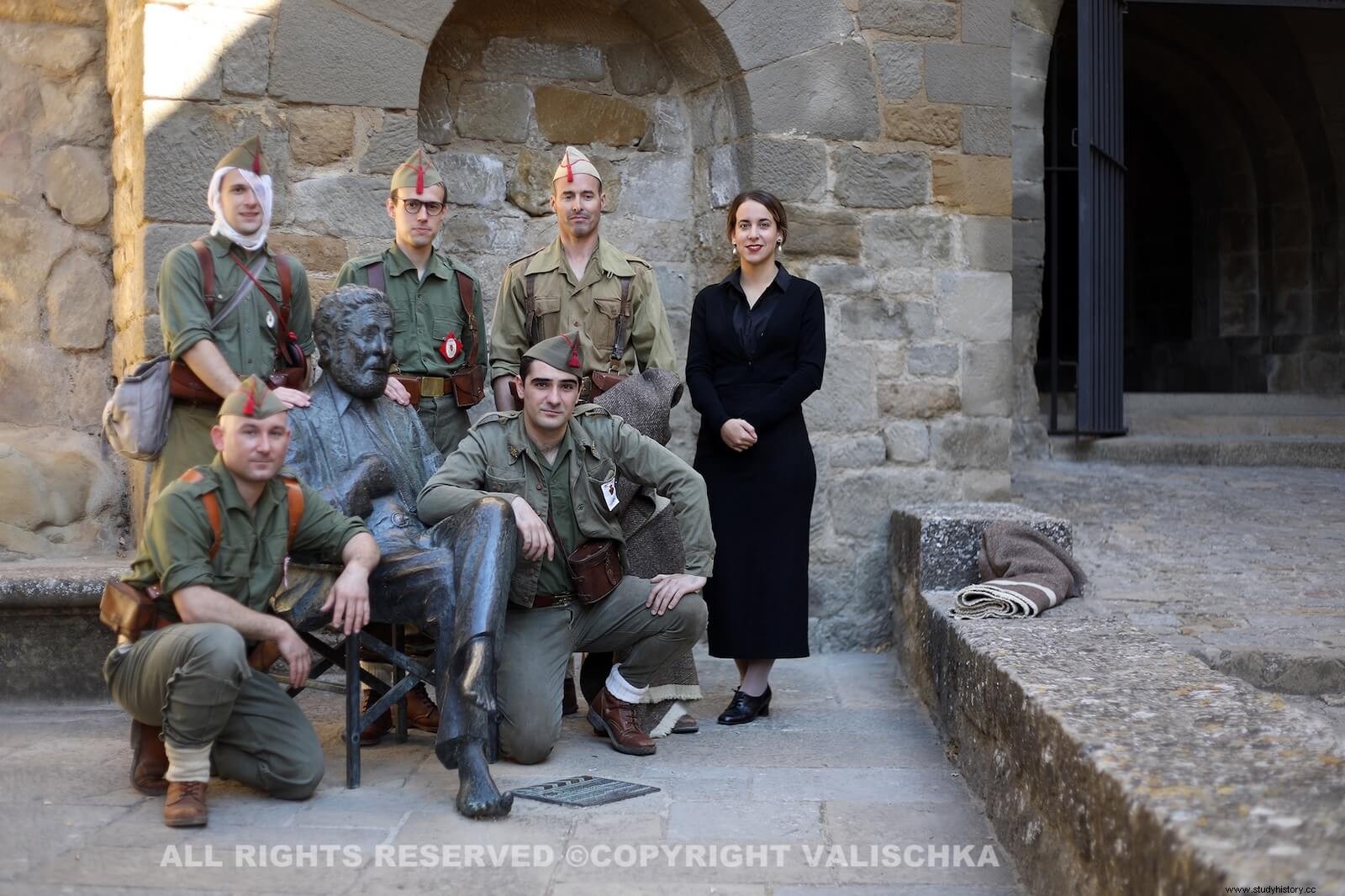
Therefore, rendering a movie as The heifer We believe that it goes beyond what is ludic and informative with what is usually identified with the historical recreation that takes place in public space, since, as we have been maintaining for some time, it is a means to an end (not an end in itself of the fact of recreating, where the reconstruction begins and ends with the mere public representation) (10). If this film was already a fictitious story with all the topics of the conflict - a cinema that, unlike what people believe with the hackneyed "yet another Civil War movie", is not represented by so many productions (11)–, the feeling of the residents of Sos is very real and, as we have said, has survived over time. They make good the Thomas theorem, "if people define situations as real, these are real in their consequences" (12).
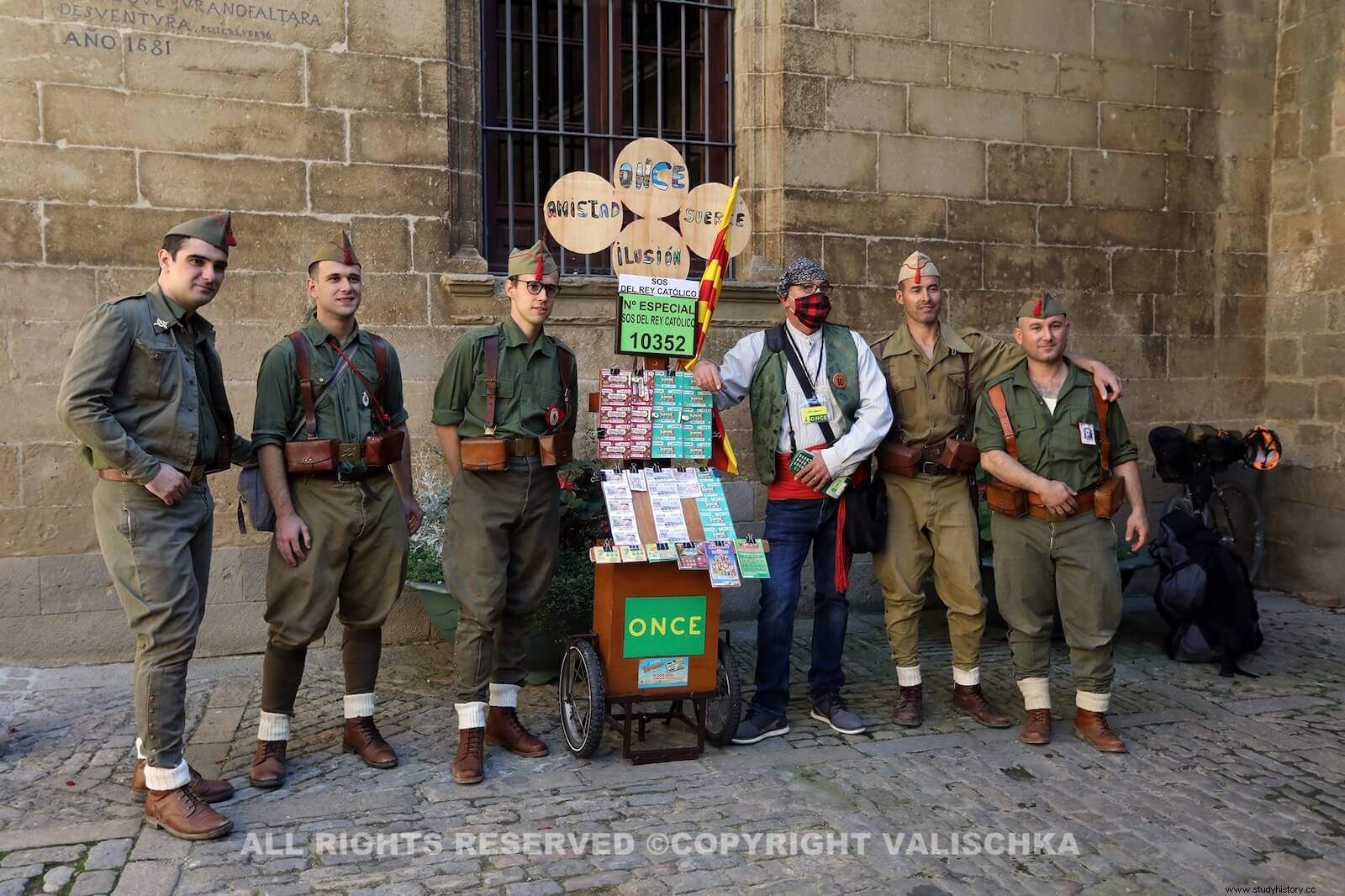
Composing the characters in the scenarios of The Heifer
The photo session took place on Saturday, October 9, 2021, coinciding with the Hispanic bridge and was characterized by the party atmosphere, which made it easier to get carried away by that histrionics, so characteristic of the Berlanguian universe and more so in this film with performances such as those of Alfredo Landa, José Sacristán, Willy Montesinos, Santiago Ramos, Carles Velat and Amparo Soler Leal (whom the re-enactors represented) with surreal and absurd dialogues that portray the characters as true idiots without being one, while the village idiot is by far the smartest. This and other paradoxes of the Berlanguian universe and various phrases from Azcona's script, which were present on everyone's lips depending on the occasion, the wonderful relationship between the associations Sancho de Beurko and Primera Línea and the fact that we were all fans of the film, They made the day so much fun. As we toured the most recognizable settings –previously selected before arriving in Sos, although others arose there– we had the opportunity to deal with various residents of the town who lively shared with us their experiences during the filming of 1984, while the visitors were pleasantly surprised and there were many who were photographed with the re-enactors. It is a tourism linked to culture that visits the town for its enormous heritage and the beauty of its historic center, so the experience was very pleasant and positive.
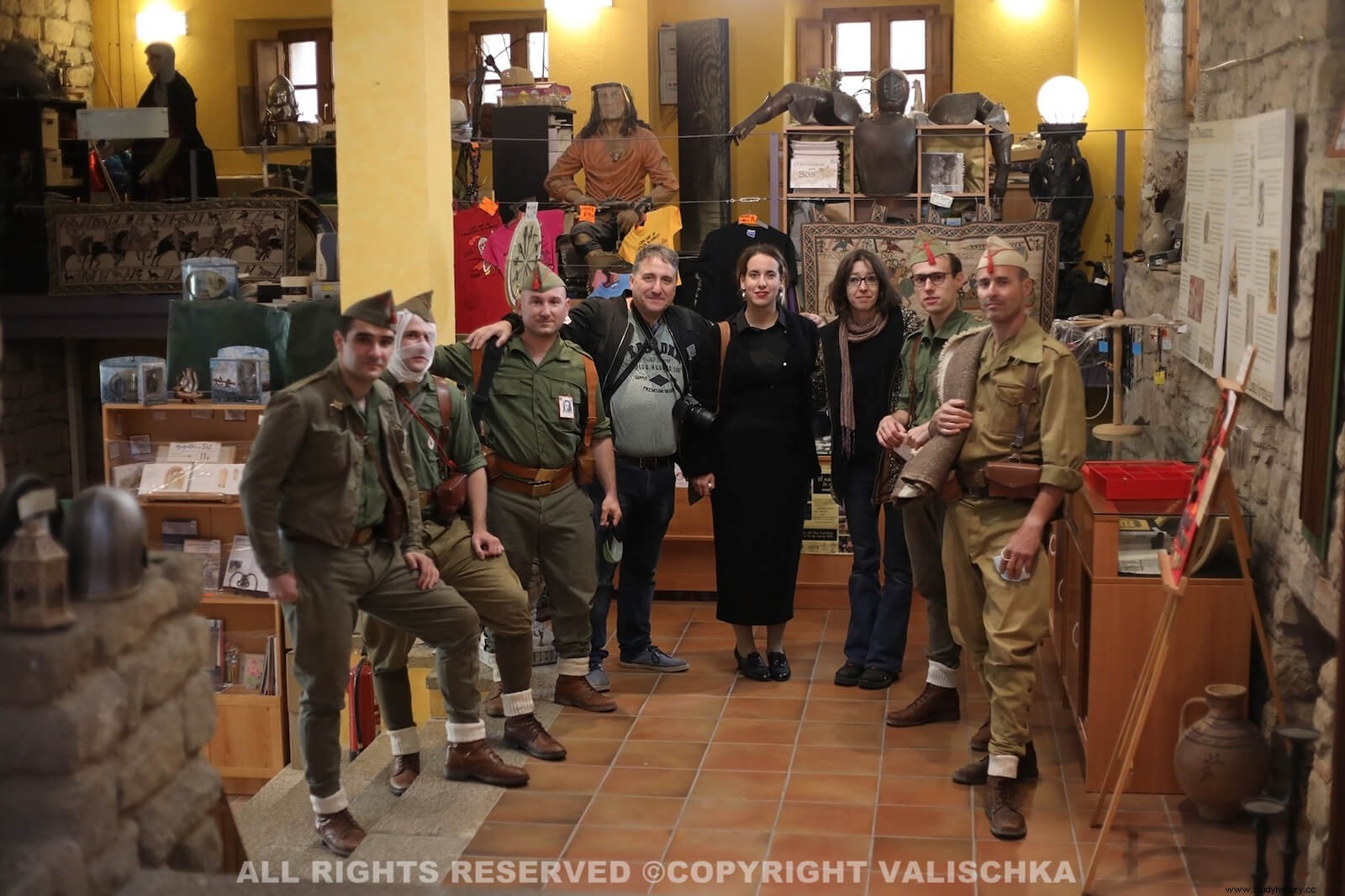
The scenarios chosen were the church of San Esteban, the surroundings of the Portal de la Reina, the streets Ejército, Meca, Pons Sorolla and others, but we also went through the space dedicated to The heifer in the birthplace of Fernando El Católico with the mayor as hostess and the itinerary with its twelve bronze chairs personalized with the actors and the statue of Berlanga. The common thread of the entire set was, obviously, the film, but it is important to point out that only the part that concerns the urban center of the Villa, much easier than the field because the locations are perfectly recognizable for us, observing on-site details of props that can still be seen with little effort and that we will not reveal so that anyone who wants to travel to this beautiful town in Zaragoza can enjoy their own trip and sensations.
The photography was commissioned by one of the most renowned photographers in the world of historical recreation , Valischka, who honors us with his friendship and support and to whom we entrust the task of turning images into stills. A server, as an improvised assistant director, was in charge of planning those scenes that could be reproduced with the means displaced there and the available re-enactors, a total of six, who did a very commendable job to compose the characters of the film, Of course it is within our possibilities. All recreation –although it may seem like a truism, it is not, since disagreements constantly arise on social networks due to issues related to rigor (13)– is a reinterpretation of reality and, therefore, always brings new elements, so in In this case, it was expressly renounced to compose an exact frame to the original, which would have been impossible, as well as enormously frustrating for the team because they are actors who are unrepeatable icons and who cannot be imitated in any way, in addition to the fact that some do not even They are not even among us anymore, like Landa, Velat and Soler Leal, and we wanted to be very respectful of their memory. That freedom allowed each person to freely interact with the honoree – well, that is simply what it is, a modest tribute – and released tensions that would not have contributed anything to the creative process that each re-enactor has to do. The format chosen to disclose this entire process, joining the frames with Valishka's images, is reminiscent of photochromes or lobbycards that were seen in the lobbies of cinemas.
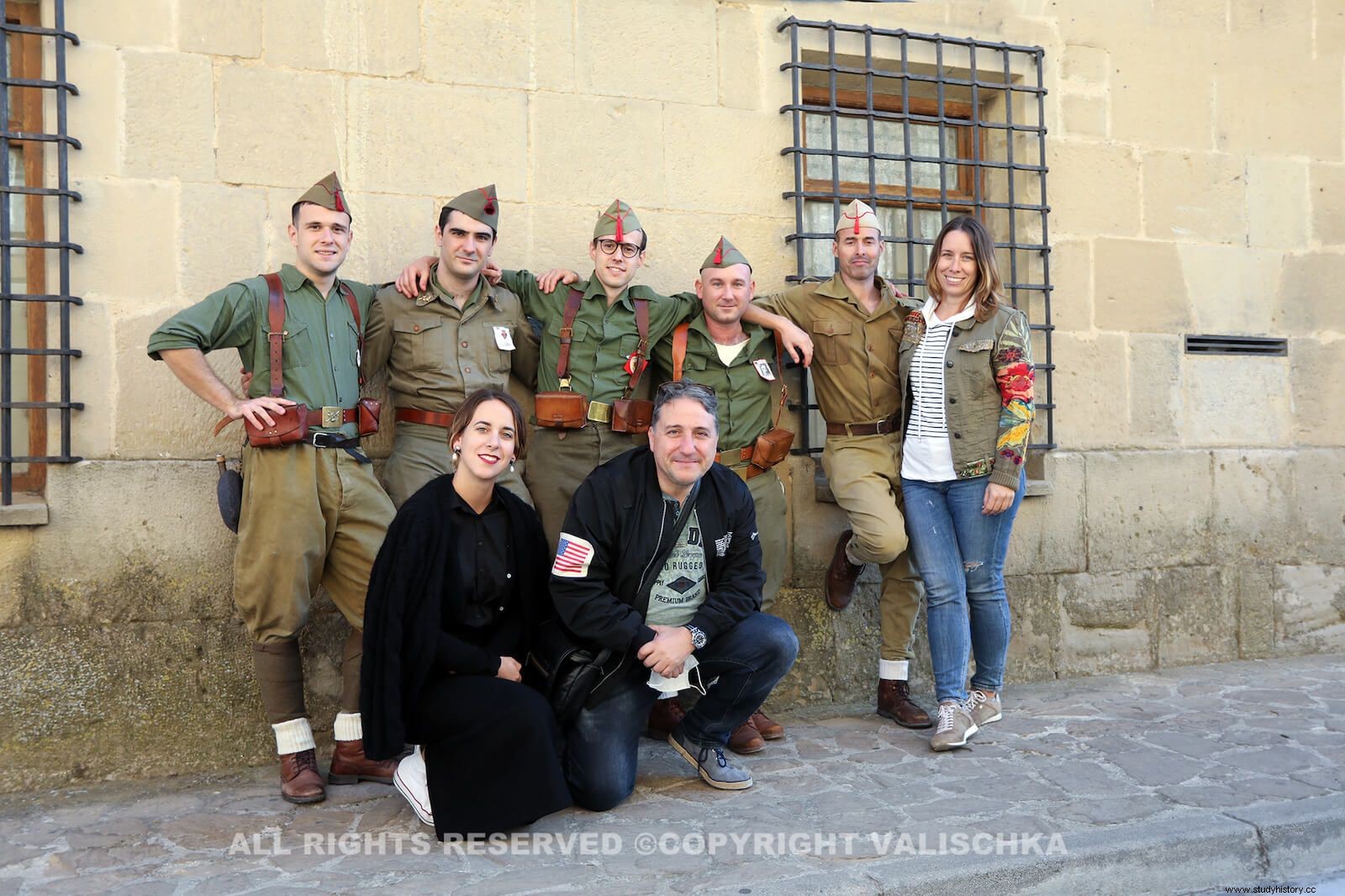
I would not like to finish these lines without thanking Javier Morón (who recreated Santiago Ramos), María Nogueras (Amparo Soler Leal), Eneko Tabernilla (José Sacristán), Eder Artal (Carles Velat), Egoitz Ereño (Alfredo Landa) and Mikel León (Guillermo Montesinos), while Ana Belén Moliner helped us with everything. The help of Loli Ibáñez, Sos librarian and manager of La ruta del tiempo, and Julio Ezquerra, the friendly ONCE salesman, have also been very important. And since we do not want to wake up from Berlanga's dream, just like him, we also want to thank "the very illustrious municipality of Sos del Rey Católico and all the residents of this town, for their generous collaboration, thanks to which it has been possible to carry out The heifer ”. It goes for all of them.
Photochromes Gallery
Photos © Valischka photography. Click on the images to enlarge.
Notes
- Jesús Ruíz Mantilla. "Berlanga file:three films that the censorship prohibited him". (May 9, 2021).
- Luis M. González. "The heifer:Historical memory and carnival humor"in Quaderns de Cine:Cine i memòria històrica , no. 3 (2008). P. 73.
- Ibid, p. 75.
- Information collected by María Nogueras, researcher at the University of Zaragoza.
- “100 Years of Berlanga – Sos de Cine”.
- It is worth mentioning, among others, the days that the historical recreation group Primera Línea dedicates to the Orwell Route (Alcubierre, Monegros) with a new format of guided and dramatized visits that are It has been called throughout the Spanish geography "living trench".
- See “Why is historical memory necessary?” (November 1, 2018) ().
- Speech by Luis García-Berlanga during the reception ceremony as academician of the Academy of Fine Arts of San Fernando in 1989.
- “The screenwriter Rafael Azcona dies”.
- In this sense, historical recreation as well as other types of visual expressions, such as "Documentary games" or documentary games, can become tools to address other more complex and that go beyond the merely playful [Ricard Manblona Agüera. (2012). The new subjectivities in contemporary documentary cinema. Doctoral thesis at the International University of Catalonia. P. 94.
- Luis E. Parés. “Another damn movie about the Civil War (I)” (September 25, 2019).
- William I. Thomas and Dorothy S. Thomas. (1928). The child in America:Behavior problems and programs . New York:Knopf, pp. 571-572.
- For us as Sancho de Beurko, the debate is clear, since our commitment is for a historical recreation with rigor and seriousness, but we believe that its use is somewhat broader than what the academic world, which still ignores her widely, recognizes her; For example, we have recently read Darío Español (Grupo Argos, University of Zaragoza) in a highly commendable issue of the magazine Hermus –the first dedicated to this discipline–, and we agree on the praxis of the scientific method itself, on its usefulness for socializing knowledge and on being a powerful tool for research (experimental archaeology), but we believe that the Recreation can also be a powerful catalyst for memory, of course, for that you have to get out of ancient and medieval history, which is rarely done [Darío Español Solana:“Recreación Histórica, Past y Patrimonio” in Heritage &Museography No. 20 (2019), p. 4-5].

